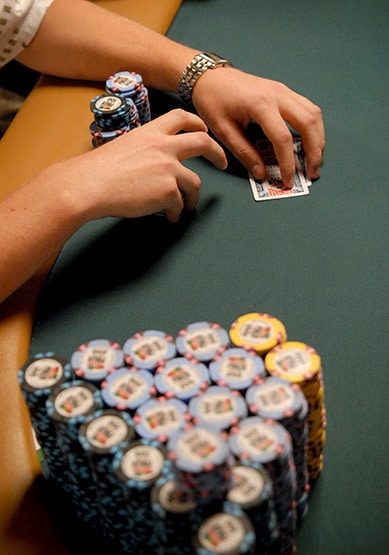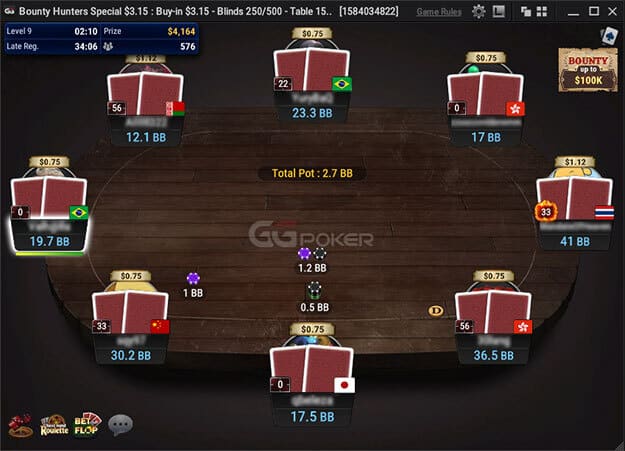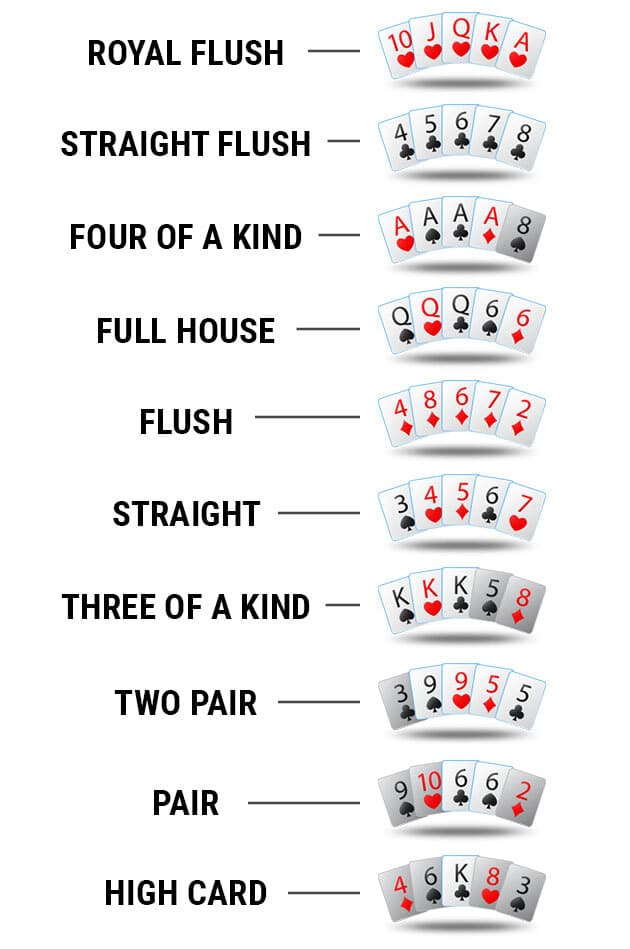The Beginners Guide Series: Poker Tournament Pre-Flop Strategy

Poker is a strategy game that is just as popular as chess, crossword puzzles, and Go. Some countries have legally recognized poker games as a viable professional activity that can be a career. Poker games can also be profitable like with active and passive investment strategies. Although poker does not have to be as large of an investment, it has the potential to garner 50-100 times more profit. There is considerable potential for rewards when you invest in playing poker tournaments.
The most popular type of poker is Texas Hold’em Poker, it’s easy to learn and play. Texas Hold’em poker is a community card game where each player is dealt two hole cards.
There are five community cards dealt face-up in the middle of the table. All players can use these shared cards to make their best five-card poker hand.
The first three community cards are the flop, while the fourth and fifth community cards are the turn and river, respectively. After the flop is dealt, another betting round ensues. Once the turn and river cards are dealt, players can use any combination of their hole cards and the community cards to make their best poker hand.
Defining Strategy
There are two different ways to win Texas Hold’em Poker: having the best five-card poker hand or betting that your hand is the best, even if it isn’t. The pot goes to the winning hand, but if the hands are the same, the pot is split evenly between the players with the same poker hand.
Players don’t always need to hold the best combination hand to win the pot. The ability to bluff is an essential skill for all poker players to have. If all the other players fold from betting, the remaining player will win the pot without having to show their cards. Even if you don’t think you can win, sometimes it pays off to bluff and make the other players fold.
Hand-ranking from lowest to highest:
While there are many types of poker tournaments that a poker player can partake in, Texas Hold’em is by far the most popular. You can use various poker strategies during each round, but you should spend some time on your own strategy development. Some players chose to play more conservatively by only playing honest hands, instead of bluffing. Other times they would go all-in hoping to draw or make their opponents fold when facing a bet for a large number of poker chips. Defining your own winning strategy will help at every poker game.
Poker is a game of skill that requires knowledge of mathematics, statistics, and data analysis to be successful. Consequently, if you narrow down and choose the correct way to play your cards in each position at the poker table – your pre-flop range – it will positively impact your win rate, but that is a topic for a later date.
As the proverb goes, “Well begun is half done,” pre-flop strategy is essential for anyone playing poker.
New Strategy
A preflop poker strategy can be divided into 6 sub-headings:
-
Position
Your position is crucial for playing poker. If you are the last player to act on all post-flop streets of play, you will have information from other players who acted before you and help you strategize your next move.
- In position, we will play wider than usual because we don’t need to worry about action like a 3-bet that forces us to fold.
- Playing from an early position gives you little information about the other hands. This lack of information tends to make winning more difficult. If you don’t open with a hand that can call a raise, then you will have to fold, essentially throwing away your chips.
- Playing from the blinds is a losing position. Defend them when you can but only play with premium hands to reduce the losses.

2. Playability
Playability of your hand is, in part, directly linked to your chip stack. The bigger your chip stack, the wider range of poker hands you can afford to play.
- Deep stack: Try to play hands with high potential playability. Hole cards with high potential, when played with a big stack, allow you to safely draw to a bigger hand while possibly trapping your opponent. The added benefit of playing these hands is it is easy to fold if you miss your draw.
- Short stack: Stick with more premium hands. Playing average blocking or drawing hands with a short stack will lead to disaster. These medium hands, especially at a full table, will find themselves dominated or drawing dead.

3. Pot Odds and Implied Odds
Pot Odds and Implied Odds should be among the first things considered when deciding what your best course of action is at the moment.
- Pot Odds is a simple ratio of the size of the pot to the amount of the bet. This ratio can be used to aid in the decision to play or fold. If odds of making a hand (odds of drawing a flush is approximately 4 to 1) is lower than the pot odds (a $3 bet into a $15 pot would be 5:1 pot odds), then play the hand. It is important to note that pot odds are calculated for the current moment, not the future.
- Pot odds, while important, should not be looked at as the only decision point. Sometimes, even if the pot odds are not in our favor, calling is the right decision. Implied odds help us make better decisions by allowing us to look at the future of the hand in addition to the immediate decision. A current bad pot odds situation could have massive implied odds if you hand hits the draw.
4. Hand Category
- When we look at our hand, we can see it in terms of pure value and bluffing value. For example, before you decide to fold your hand with one pair on the board, you should ask yourself ‘how what size bet could get your opponent to fold based on what hand you think they may have’.
5. Mixing Bet Frequency
- Mixing up your bet frequency is important to ensure your opponents cannot get a good read on you. If you only bet and raise with premium hands, then the other players will stop calling when you raise. By raising, or sometimes 3-betting, with less than premium hands, you will be doing your best to keep the other players unsure about the strength of your hands.
6. Blockers
- Blockers are cards that reduce your opponents chances for a particular hand. For example, if you have a made flush on the flop, the chance of your opponent having one is significantly reduced.

I hope that helps you understand some of the basics of pre-flop tournament betting. If you have any questions or want to read more about it or any other topic, check out some of the other articles on the GGPoker blog.
About the Author: Jinwoonon graduated from Chulalongkorn University, Bangkok in 2014 with a bachelor of science degree in Chemical Technology. Currently working as an assistant teacher specializing in Mathematics, Jinwoonon enjoys spending time using mathematics to contribute to the advancement of poker strategy
Whether you’re a fan of high-stakes cash games or the excitement of multi-table poker tournaments, GGPoker is the premier destination for poker enthusiasts. For those aiming to compete for a prestigious WSOP bracelet, push through the ranks for a WSOP Circuit ring, or simply hone their strategies in classic games or poker formats, GGPoker has something for everyone. The platform offers a seamless online poker experience, with innovative features like Smart HUD, PokerCraft, and integrated staking, designed to elevate your game. Whether you’re grinding your way up in daily cash games or competing for life-changing prizes in major online series, GGPoker provides the best environment to play, improve your poker skills, and succeed in the world of online poker. And if you are not sure where to start, you can always play free poker games and learn at the GGPoker School.

